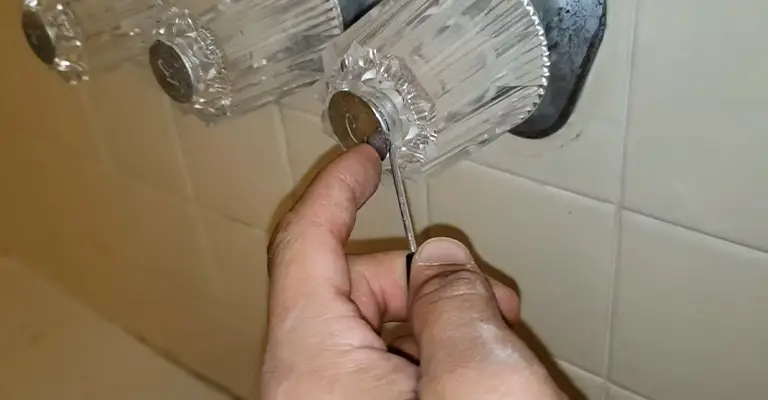Why Are My New Door Handles Stiff?
There are many reasons why new door handles may feel stiff. This can be due to the door handle not being installed correctly, making it difficult to open the door.
It could also be that the gap between the door and frame is too small, making it difficult to open.
Or it could be that the door handle is not straight, or there is a gap in between the two pieces of metal in front of and behind the handle.
Another reason for this is that the new handles have not been used yet. If so, they will loosen up with time and use.
Is Your Door Handle Or Door Knob Sticking Or Stiff To Operate?
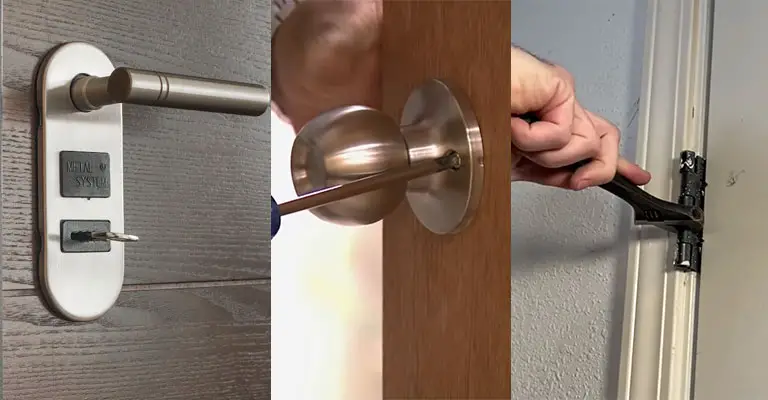
Several factors could be responsible for the problem. In a step-by-step fashion, we’ll guide you through diagnosing and fixing your problem.
Sticking door handles are most often the result of a problem with the tubular latch—the tubular latch on the inside of the door.
Tube latches work by having a spindle (metal bar) that passes through a follower (turning metal disc) incorporated into their bodies. You can open the door by retracting the latch bolt tongue with the help of the spring inside the latch body.
How To Test The Tubular Latch?
A tubular latch malfunction is often the cause of stuck door handles. Check the tubular latch plate first to ensure no obvious obstructions like loose screws or parts of the lock or latch poking through.
Troubleshooting Stiff Door Handles
The next step is to identify the cause of the stuck door handle using a few simple tests. In most cases, drooping door handles can be fixed fairly easily, especially if one of the following problems is present.
1. The Door Handle Mechanism May Need To Be Lubricated
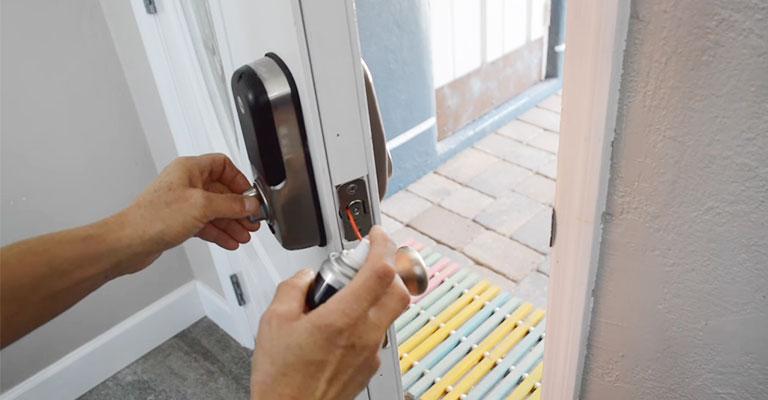
Corrosion of the mechanism can cause door handles to become stiff, particularly external handles or bathroom handles. If the handle is removed, spray a lubricant on the mechanism to ease the mechanism.
Once the mechanism has been removed, wipe everything down and grease it before replacing it to prevent any future problems. When fitting new handles, it’s a good idea to grease the mechanism on any external handles or handles exposed to excessive moisture.
It is possible to experience some resistance when springing back an individual handle when operated with the hand. As each spring in the installation works together and helps the others, it is not necessarily a fault.
If the handle is incredibly stiff, it is usually resolved by working a small amount of lubricant into it in your hand.
Since the packing washers in the mechanism will bed in with use and the handle will loosen further after installation, this shouldn’t be an issue.
2. Make Sure That The Door’s Latch Or Lock Mechanism Is Free Of Debris
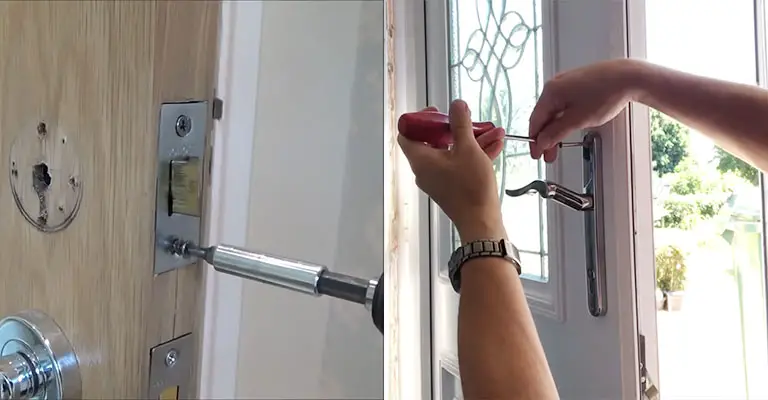
It is important to ensure that no wood shavings have been inserted into the lock or latch mechanism. In many cases, we found wood shavings inside supposedly faulty locks when we examined them inside.
The lock case should not be opened unless you are skilled in doing so, as many manufacturers will void the warranty if the lock case has been opened. Whenever you suspect the lock has a problem, you should return it to your dealer.
3. Check The Door Latch Itself
It is common for people to replace handles with new ones, and leave in the original latches and locks, which may be outdated. Instead, make sure the spindle moves freely by removing the handles completely.
If the latches are new, remove them to ensure the door mounting hole is not too small and squash the mechanism body. It indicates a mechanism binding if the latch sticks to the door but works fine when removed.
If any external moving parts catch on timber when the latch is screwed into place, make sure the machine has adequate clearance in the door.
4. Check The Door Handle Springs
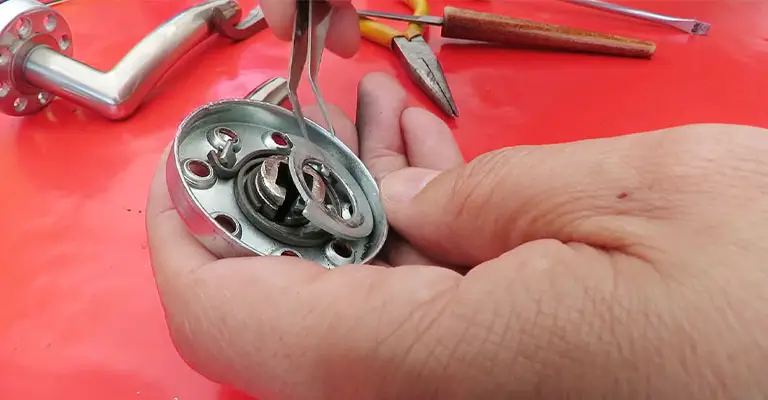
Your problem might be caused by the spring in one of the handles, in which case you will need to replace the handles. There are many people who ask us if we have replacement springs, but unless the handles are relatively recent, we don’t carry these:
Despite how similar they look; springs vary between brands regardless of how similar they look on the inside. Depending on the supplier at the time of manufacture, manufacturers can change the spring design and mechanism in their handles over time.
The right door handle spring can be difficult to locate if there is a spring for each handle on either side of the door. Circlips can break or weaken, leading to premature failure in the future.
The replacement may not always be straightforward. A stiff or loose action may result from packing washers not going back as expected.
5. Make Sure All Components Of The Door Handle Are In Good Working Order
A component in your old installation may have failed because it was working well before. You can test this by dismantling the door handle assembly and checking each component separately. Check the latch by turning the spindle after trying each handle.
The latch follower may also have cracked if the spindle is misaligned, a fault that is caused by cracks in the latch follower. Again, replacing the latch with a like-for-like one can solve the problem if the latch fails.
Read more to learn about the tools you need for home improvement
6. Align The Spindle Of The Door Handle
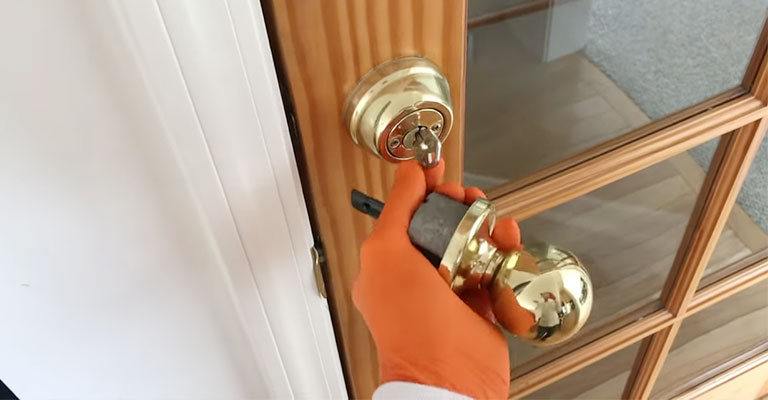
Make sure the latch follower is aligned with the spindle. If the handle is loosened, you should be able to identify any misalignment of the spindle with your eyes from the edge of the door.
There is a possibility that the mounting screw holes for the handles are in the wrong place, so fixing it could be challenging. In addition, a pilot hole next to an existing one may also be out of alignment, which means drilling a new one right beside it.
The handle can be clamped on the door even with elongated holes by replacing the screws with back-to-back fixings.
7. Make Sure The Spindle Length Of The Door Handle Is Correct
As you tighten up the door handle, check that the spindle is not too long and causing a bind or misalignment. As spindles need to be cut according to the thickness of the door, they should not be so short that they may disengage with the handle follower when sliding into one or both handles.
The door handle may become inoperative in this situation, thereby locking the person inside. To prevent binding and allow for natural movement during door handle operation, the spindle length should have a small amount of end float.
8. Remove Your Door Handle’s Fixing Screws
Make sure the backplates or roses of the handles are loose. You are most likely experiencing binding or misalignment if the handles now work properly.
Often, the back face of the back plate or rose can have a slight protrusion on the mechanism at the back of the handle. Loosening the handles will release the bind that can occur in this area of the mechanism.
To allow this mechanism to rotate, there must be sufficient clearance on the door face, which is usually achieved by having a larger hole on the door face. Replacing the handles is as simple as enlarging or chamfering the hole to suit your needs.
It is also common for new handles to have stiff springs. This can make it difficult to operate the handle or prevent it from returning to its horizontal position. It is possible to resolve this issue by applying a light coating of lubricant to the mechanism.
Final Words
There is no need to be intimidated by door handles. You can fix your door handles with these simple solutions.
Most droopy door handles can be easily fixed, but some are more difficult. In some cases, it could be as simple as adding more lubrication or strengthening the latch action. Also careful about the door frame gap.
It is important to ensure that your door handles and latches are compatible before you install new handles. A tubular latch is usually all that is needed for new lever handles that are sprung.
Double sprung, heavy-duty latches must be used on unsprung handles. With unsprung latches, handles won’t return to horizontal after use when fitted with standard latches.





